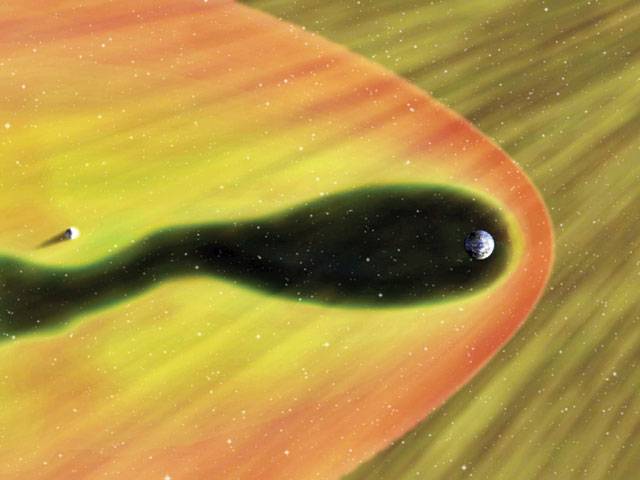ISLAMABAD - Which way the wind blows in space has new importance for astronaut safety at the Moon. Using data from several NASA missions, scientists discovered that wind created by high-speed particles from the Sun can cause the tail of Earth’s protective magnetic bubble to flap like a windsock in a strong breeze.
This movement can pull the tail so far out of line that it exposes the Moon to potentially damaging charged particles at times it was previously thought to be protected. The finding, which reveals a new challenge of predicting when solar activity exposes the Moon, will help scientists and engineers prepare for future lunar missions.
Our Sun provides life-giving light, but it also spews out high-speed particles – the solar wind, in which some very high energy particle bursts can be damaging to satellites and humans in space. While Earth is safe inside its magnetic bubble – the magnetosphere – the Moon continually passes into and out of the stretched-out tail of this protective bubble as it orbits the planet.






